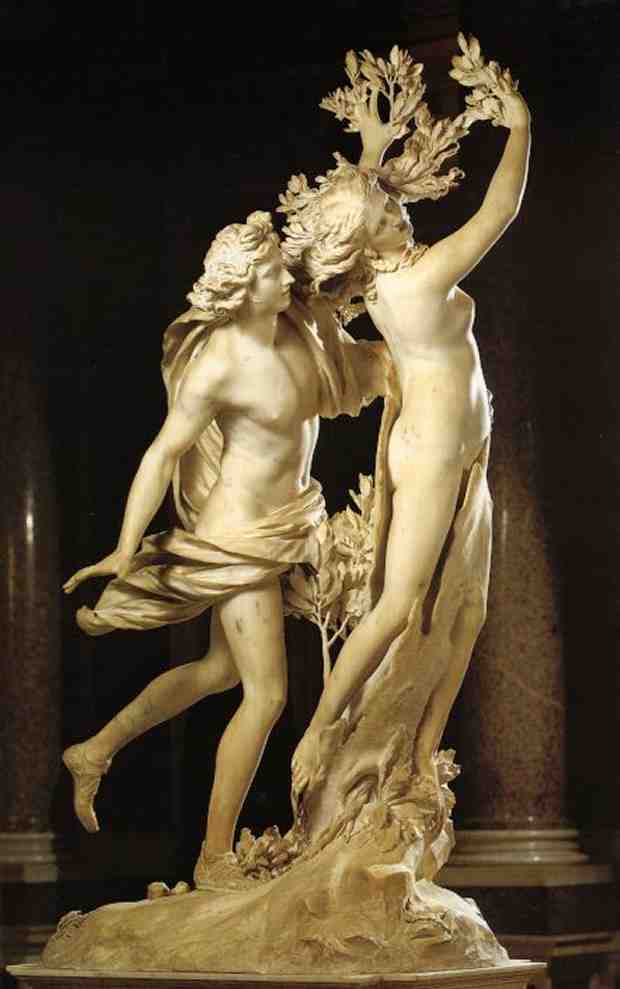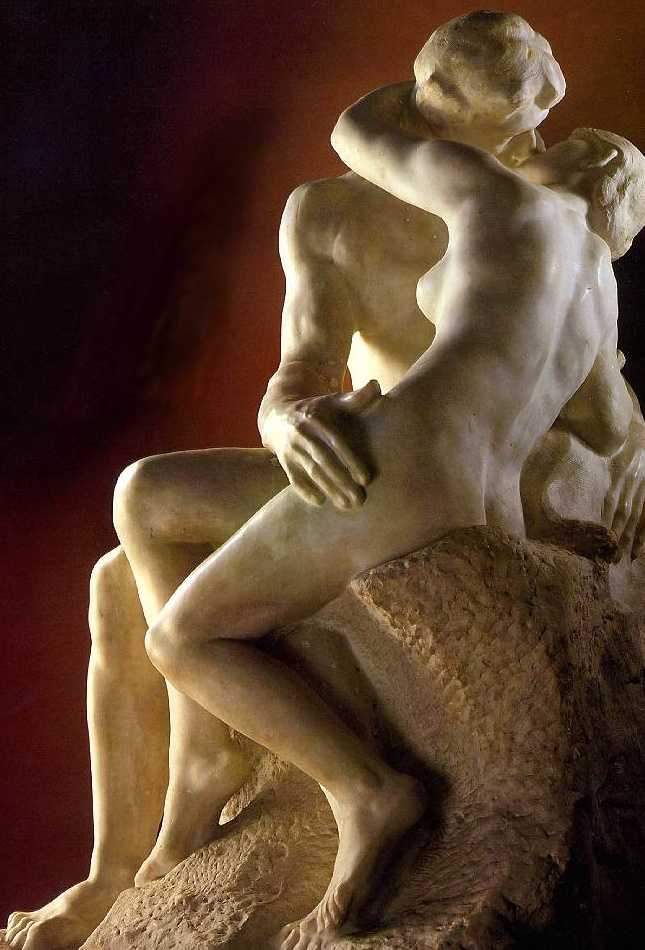White marble is the most fertile material for sculptural works depicting people. It is so soft that it lends itself well to the cutter, but at the same time it is dense enough to allow the finest details to be carved and excellent to accept grinding. The marble statue best conveys the emotional state, sensuality and anatomical perfection of the human body. The sculptors of ancient Greece were the first to bring the art of sculpting to such a level that it began to seem that a dead stone began to come to life, gaining beautiful outlines. Since then, artists from other eras have consistently sought to improve the technique of marble sculpture in order to express their highest ideas in it as brightly and figuratively as possible, to convey the impeccable forms and depth of human feelings.
Why marble?
From ancient times, Egyptians made extensive use of various types of stone for making sculptural forms, such as black obsidian and basalt, green-brown diorite, purple porphyry, soft calcite alabaster, and limestone. Since antiquity, statues have been created from bronze and alloys. So why exactly marble is so appreciated by artists, and works of this material seem almost alive?
Like alabaster, whose thin plates transmit light well, marble consists of calcite and also retains some light transmission. Some velvety texture does not form contrasting glare and sharp deep shadows that are inherent in the metal, and produces a soft black and white game. Sculptural marble has a dense structure and the lightest tone, which, together with smooth grinding of the material, reflects light well, unlike colored stones. All these qualities to a greater extent create the impression of living flesh in marble sculptures than those created from other material.
Sculptural marble contains the least amount of impurities, which affects not only the almost white color, but also the uniformity of the stone. This is a plastic material that can be easily processed, but is dense and hard enough to prevent splits and cracks, allowing you to work out the smallest details. Because marble is particularly preferred by sculptors.
Antiquity
The ancient Greek art of sculpture in the 5th century BC reached its highest peak. At that time, the basic techniques, techniques, and mathematical calculations necessary for the birth of statues developed. A special system of proportions was formed that determined the ideal of beauty of the human body and became the classic canon for all generations of artists. Over the course of a century, the level of mastery of Greek sculpture has come to perfection. However, the statues of that period were mostly created from bronze and wood with gold and ivory finishes. Marble statues were mainly decorated with pediments, friezes and external walls of temples, most often in the form of reliefs, bas-reliefs and high reliefs, that is, partially immersed in the background plane.
Starting from the 4th century BC, sculptural works of Greece are marked by a special plasticity of poses, the transfer of sensuality, drama and intergrowth, for the embodiment of which the masters began to prefer marble. Exalting the beauty of human feelings and body, the great antique sculptors created "living" marble statues. In the largest museums in the world, people still admire the perfection of carved forms and the virtuoso work of artists such as Skopas, Praxitel, Lysippus, lesser-known sculptors and those whose names history has not preserved. For many centuries, classical works have served as the academic standard, which up to the period of modern art, has been followed by all generations of sculptors.
Middle Ages
It is amazing how quickly, with the advent and development of Christianity, the achievements of ancient arts and sciences were forgotten. The high skill of the sculptors was cast down to the level of the ordinary craft of inept carvers. Even at the end of the XII century, rather rough and primitive statues, not completely carved and separated from the base, remained part of the stone block that was mounted on the wall of the temple. Separate figures appear only from the 13th century, but with expressionless faces in constrained static poses, rather similar to archaic idols, they remained just an architectural addition. Nudity and reflection of sensuality become unacceptable, the classical principles of beauty and proportions are forgotten. In the manufacture of a marble statue, more emphasis is placed on the folds of clothes, rather than on the face, which was given a frozen expression of indifference.
Renaissance
Attempts to revive the lost knowledge and sculpting skills, to create a theoretical base of technical techniques, began at the end of the XII century in Italy. With the beginning of the XIII century on the Apennine Peninsula, Florence became the center of the development of arts and cultural influence, where all talented and skilled craftsmen rush. At the same time, the first large school of sculpture opens in Pisa, where artists study and rediscover the laws of ancient architecture and sculpture, and the city turns into the center of classical culture. Creating statues takes on the position of independent discipline, and not a minor addition to architecture.
The total period of changes in art was the XV century. Artists revive and accept for reference the laws of proportions recognized in antiquity and the canons of beauty. In a bronze and marble statue, sculptors once again strive to reflect human feelings with noble and sublime ones, convey subtle nuances of emotions, reproduce the illusion of movement, and give ease to the poses of figures. Such qualities distinguish the work of Ghiberti, Giorgio Vasari, Andrea Verrocchio and the greatest master Donatello.
High Renaissance
The short stage of the Renaissance is called the High Renaissance, it covers the first thirty years of the 16th century. This short period was an explosion of creative genius, which left unsurpassed creations and influenced the formation of further directions in art.
Italian sculpture in its development reached a climax, and its highest point was the work of the greatest artist and sculptor of all time - Michelangelo. The marble statue, which came out of the hands of this talented master, combines the high complexity of the composition, the perfect technical processing of the material, the perfect reflection of the human body, the depth and elevation of feelings. His works exude a feeling of tension, hidden power, colossal spiritual strength, they are full of noble greatness and tragedy. Among the master’s sculptural works, the great accomplishment of human genius is considered to be “Moses”, the composition “Mourning of Christ” (“Pieta”) and a marble statue of David. According to art critics, after Michelangelo, nobody had anything to repeat like that. A powerful, too free and extremely individual style was determined by the artist’s enormous talent and was inaccessible to his many students, followers and imitators.
Baroque
At the stage of the Late Renaissance, called Mannerism, a new style is formed - Baroque. It is based on the principles of absolute classicism, however, sculptural forms lose their former simplicity of lines, sincerity and nobility of the idea. The characters' poses acquire excessive simplicity and mannerism, sophisticated compositions are complicated by an excess of details, and the displayed feelings are theatrically exaggerated. Most of the sculptors, chasing after the external effect, sought to show only mastery of execution and their rich imagination, which was expressed in the careful study of numerous details, pretentiousness and piling up of forms.

However, this period was marked by an extremely delicate, almost jewelry technique and craftsmanship in the manufacture of marble. Outstanding sculptors such as Giovanni Bologna (student of Michelangelo), Bernini, Algardi masterfully conveyed the impression of movement, and not only a very complex, sometimes unstable, composition and pose of figures, but also beautifully carved, like sliding folds of robes. Their works are very sensual, they seem perfect and affect the deepest emotions of the viewer, attracting his attention for a long time.
It is believed that the style lasted until the end of the XVIII century, manifesting itself in other directions as well. But in the 19th century, when artists reproduced only the previous stages of art, baroque features often found expression in sculpture. Such an amazing example is the marble statues with the veil of the Italian master Rafael Monti, who created the incredible illusion of transparent shroud from stone.
Conclusion
Throughout the 19th century, a marble statue was still under the absolute influence of strict classicism. Since the second half of the century, sculptors have been looking for new forms of expression for their ideas. However, despite the rapid spread of realism in painting, when artists sought to reflect the true reality of life, the sculpture remained for a long time dominated by academism and romanticism.

The last twenty years of the century have been marked by a realistic and naturalistic trend in the works of French sculptors Bartolome, Barrias, Carpo, Dubois, Falter, Delaplansch, Fremier, Mercier, Garde. But mainly the work of the brilliant Auguste Rodin stood out, who became the forerunner of modern art. His mature works, often causing scandal and being criticized, embodied the features of realism, impressionism, romance and symbolism. The sculptures “Citizens of Calais”, “The Thinker” and “Kiss” are recognized as world masterpieces. The sculpture of Rodin became the first step to the forms of future directions of the XX century, when the use of marble was gradually reduced in favor of other materials.